Many of you, when you start out in the world of sewing or flamenco fashion, ask us: Which fabrics do I need to make a flamenco dress?
A difficult question to answer! Because flamenco fashion follows the trends of ready-to-wear fashion and there is not one right answer, practically all of them.
However, today we bite the bullet and we will try to give an answer by reviewing the basic fabrics that are normally used to make the gypsy costume.
Exterior
There is nothing written about taste; that is a universal truth. Sometimes, we choose the look of our flamenco dress based on a nice print or a cut that we like or because we are looking for a certain comfort on our skin.
If this is your case, our experts can help you to complete the outfit by adapting the fabric you like best or the most suitable fabric for the pattern you want, even finishing it off with a petticoat, lining, a small shawl or any other detail you can think of.
However, if you are still undecided, read on!
Poplin
We start with one of the best known fabrics when we talk about Flamenco. A traditional option that is characterised by its rigid and stiff nature, with stiffening. And although in recent times new bases have been incorporated into the market, this is still one of the favourite options.
Some recommendations, available in our shop and on our website:
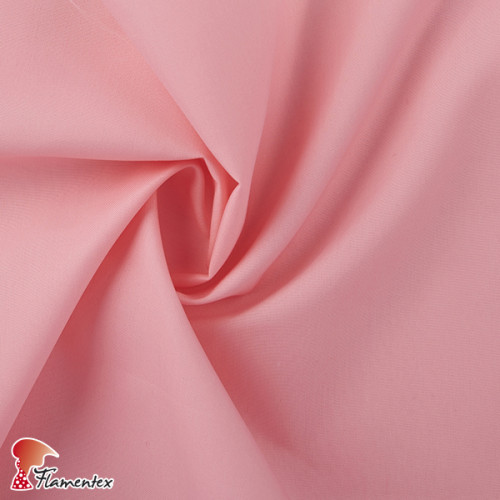
POPELIN FLAMENCA CLAROS. Reference: 01488/2-0920. Poplin fabric special for flamenco dresses. Colour: Baby pink.
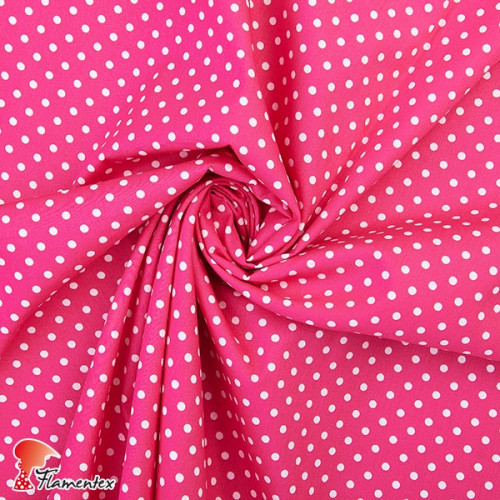
HARU. Reference: 02757/45-0902. Cotton poplin printed with polka dots 0,40 cm.
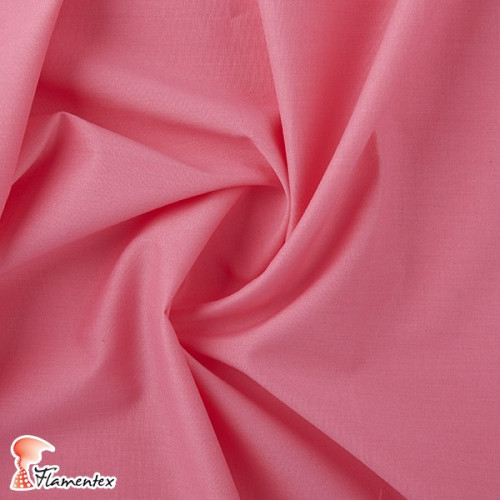
TOQUE. Reference: 02281-0009. Cotton stretch poplin. Colour: Pink.
Elastic satin
Also known as stretch cotton, it could be defined as an "evolution" of poplin. We are still working with a rigid fabric but with a small percentage of elastane added, so that it sticks to the body providing more comfort.
We discovered some options in plain, printed and flocked:

JENNY. Reference: 02432/53-0011. Stretch satin fabric ideal for very fitted flamenco dresses. Floral print.

MADISON. Reference: 00121-0005. Stretch satin fabric perfect for fitted flamenco dresses. Colour: Yellow.
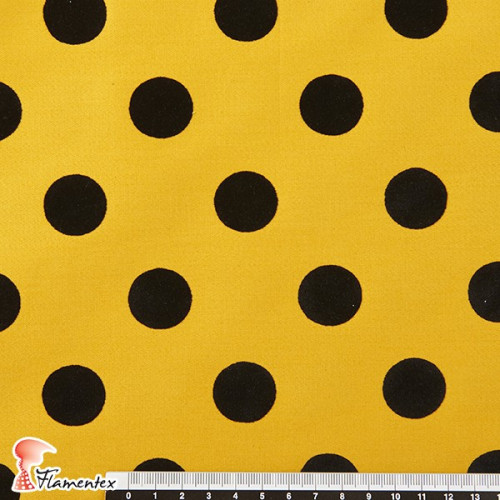
MADISON FLOSAR D/3. Reference: 02188/3-0502. Elastic satin fabric with flocked polka dots of 2.50 cm. Colour: Ochre.
Crepe
Also known as Crep o Koshibo, this fabric is also very popular in flamenco fashion. In addition, it is a fabric that does not crease and is easy to sew, making it a very popular choice also for romerías.
The drop and movement also make it a highly prized option.
Let's look at some possible combinations:
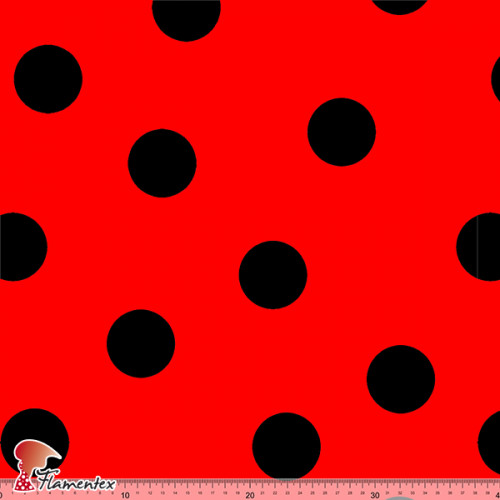
NATASHA. Reference: 00773/97-0402. Very drapey crepe, perfect for flamenco dresses. Polka dots print of 5,50 cm.

NATASHA. Reference: 00774/52-0002. Drapey crepe fabric. Flower print.
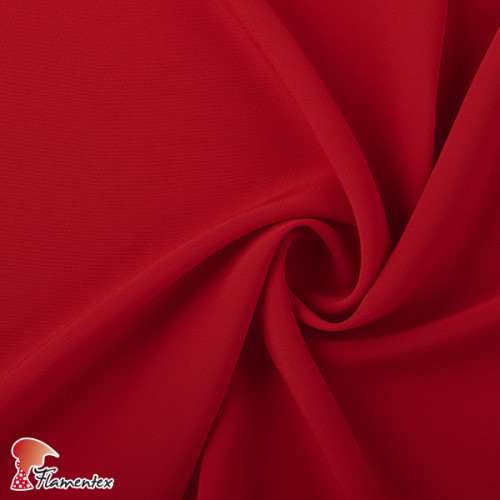
TORA. Reference: 00470-0431. Very drapey crepe fabric.
Knit
As in the previous one, the knitted fabrics are comfortable and pleasant, also with drape and movement. The difference with the previous one is its elasticity and touch, with which we achieve a very different effect.
Ideal to combine plain and patterned with the same base:
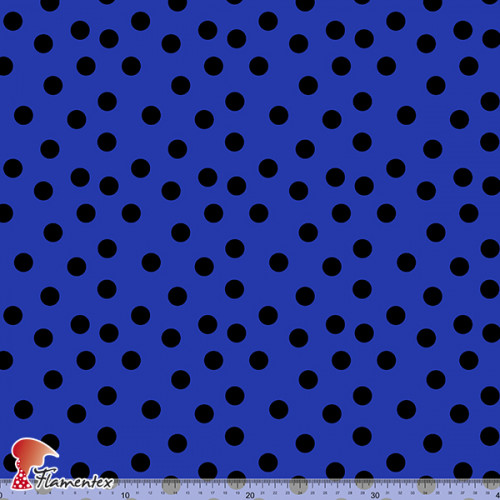
ORIA. Reference: 03501/01-0317. Printed stretch knitted fabric (silk stitch). Polka dots of 1.50 cm.
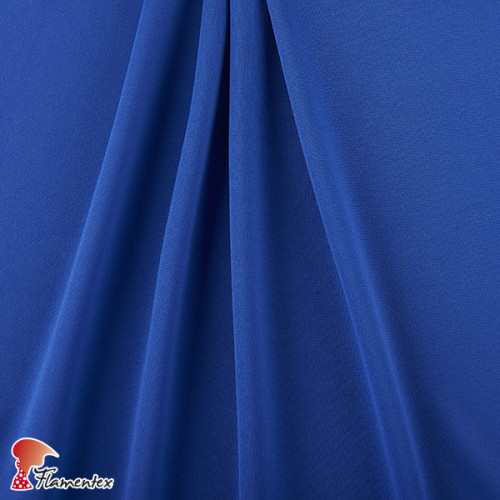
BASICO ALVEDRO. Reference: 00646-0307. Stretch knitted fabric. Silk knit.
Chiffon
This is an option that was added to the list of flamenco fabrics late, but it is much loved for its freshness, lightness and movement. However, its difficulty in sewing makes it an option only suitable for expert hands.
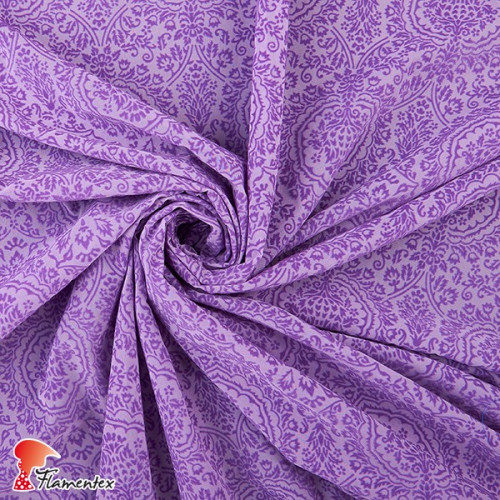
DRAVA FLOCADO. Reference: 02794/10-1005. Fine chiffon flocked fabric.

DRAVA FLOCADO. Reference: 02794/21-0753. Fine chiffon flocked fabric.
Inside
Apart from the visible fabrics, flamenco dresses also hide their secrets, such as the lining or the petticoats. We discover them!
Lining
As a general rule, all gypsy costumes are lined, with some exceptions, such as playing with transparencies or using a thick fabric.
We will adapt the lining to the outer fabric. That is to say, if we choose a fabric with elastic for the outside, the lining must also have elasticity. On the other hand, if we choose a rigid, non-stretch fabric for the outside, the lining should also have the same characteristics.
Underskirt and ruffle base
These are the fabrics used to give volume to our suit. And we have Cancan, Tulle or Organdy , three very different options:
The organdie is a stiff, soft and high quality fabric, specifically designed for flamenco fashion. Among its advantages, we highlight its quality and longevity: even if we wash it, it will keep its stiffness and rigidity. Although it is true that it is not the cheapest option, it is usually the most accurate when it comes to giving volume.
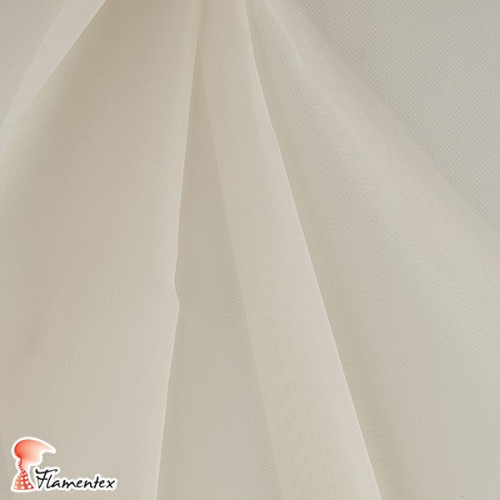
ORGANDI FLAMENCA. Reference: 01496-0101. Special rigid transparent fabric for under ruffles or cancan.
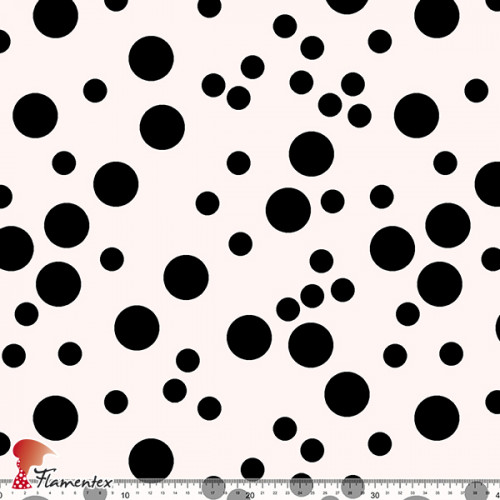
ORGANDI FLAMENCA ESTP. Reference: 03745/06-0116. Special rigid transparent fabric for under ruffles or for cancan. Polka dot pattern between 2,00 and 3,50 cms.

ORGANDI FLAMENCA. Reference: 01496-0002. Special rigid transparent fabric for under ruffles or cancan.
The second option to highlight is the cancan: a fabric also rigid but rough. While it is true that it is more economical, we must take into account the design of our final suit, as its roughness can cause chafing depending on the design of the suit.
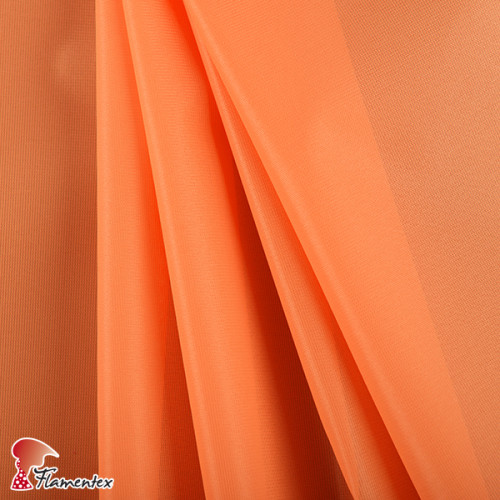
ORGANDI FLAMENCA. Reference: 01496-0002. Rigid fabric, especially for cancan.

BASICO FOLIES. Reference: 00395-1003. Rigid fabric, especially for cancan.
Finally, tulle would be the least used option but we should not ignore it. It is a very light and economical fabric that will allow us to put many meters of volume. A perfect solution if you are looking for spectacularity.
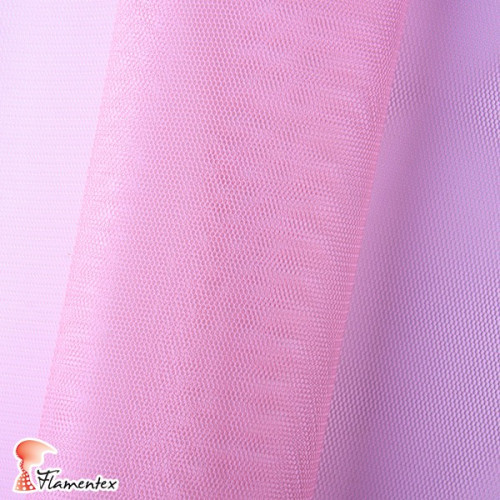
TUL. Reference: 00108-0920. Tulle fabric. Colour: Baby pink.

TUL. Reference: 00108-0918. Tulle fabric. Colour: Fluorescent fuchsia.

TUL. Reference: 00108-0901. Tulle fabric. Colour: Fuchsia.
Closure of the suit
All costumes have their finishes and details. We are not only talking about shawls, but also about romantic sleeves or daring backs. For this, we will count on lace, elastic tulle and chiffon or crêpe.
Lace
Although it is not an essential element of the flamenco dress, it is the most used decorative element..
The blonde lace is often used to decorate sleeves or backs or to add details to the costume itself. For the latter example, we refer to guipure.
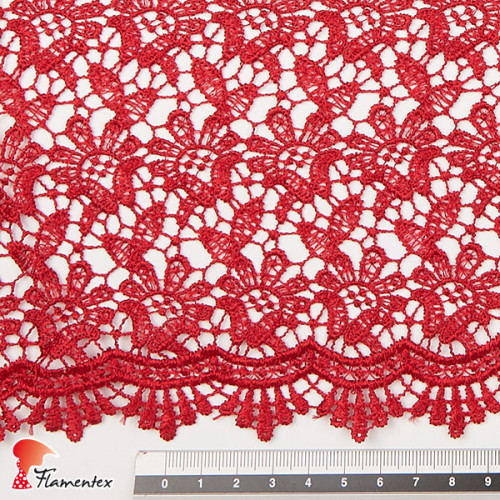
MAVOR. Reference: 03896-0004. Blond lace fabric finished with lace on both sides.
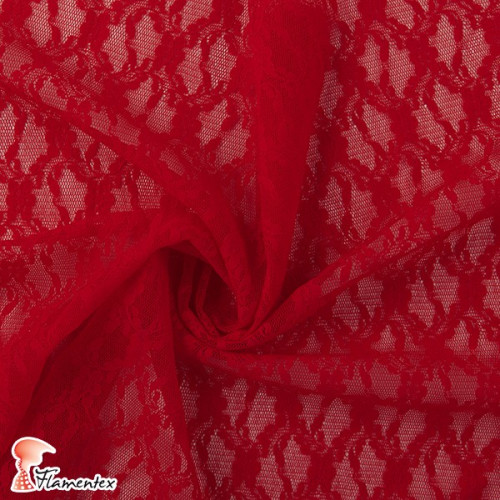
VELEZ. Reference: 01699-0004. Blonda fabric.
Elastic tulle
As we have seen in the analysis of this year's trends, it seems that this season is closing in on suits with tulle, rather than lace. It is a simpler and more romantic effect if we only apply it on sleeves and back, but daring and sensual if we apply it all over the body.
In any case, it is an equally effective and flamenco resource:
For this we can use a concealing tulle (skin effect), as well as a plumeti:
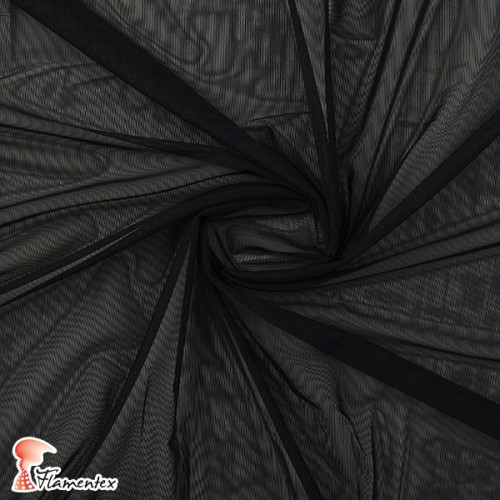
MESHDANCE. Reference: 02633-0002. Tulle with elastane.
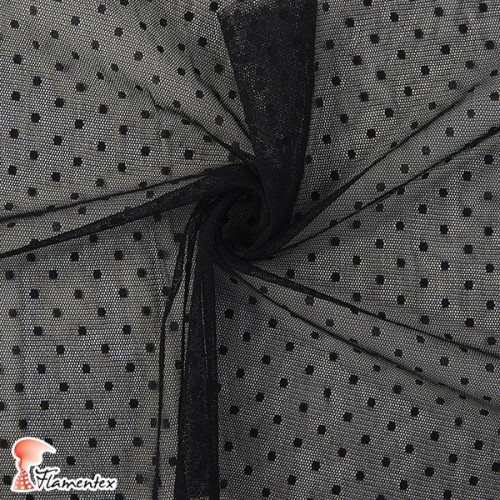
EDNA. Reference: 01873-0002. Plumeti tulle fabric.
Mantoncillos
Although they can be made from any fabric, such as lace, the most popular fabrics are usually chiffon and crepe. They are ideal to complete the costume, giving it that flamenco power that we like so much:

NATASHA. Reference: 00774/51-0901. Very drapey crepe fabric. Floral print.
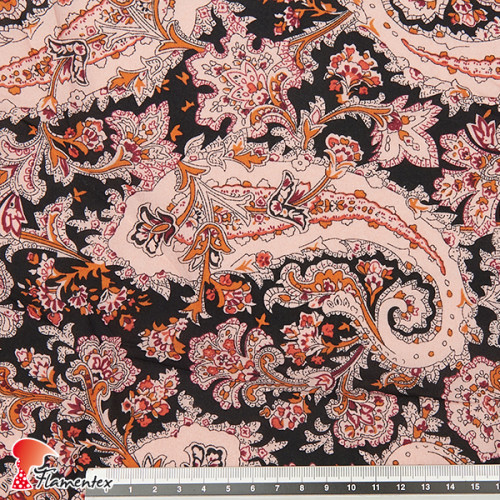
MORALEDA. Reference: 04112/01-0252. Chiffon fabric with paisley print.
As we can see, there is no specific fabric for flamenco but we have a wide variety of fabrics that we can adapt to fashion and to your style. And you, what fabric do you like to use?
If you want more information or have any doubts, our experts will advise you on everything you need! We are waiting for you in our shop in Seville or through our website.
Cover image: Photo by LUIS ANTONIO FUNCIA
